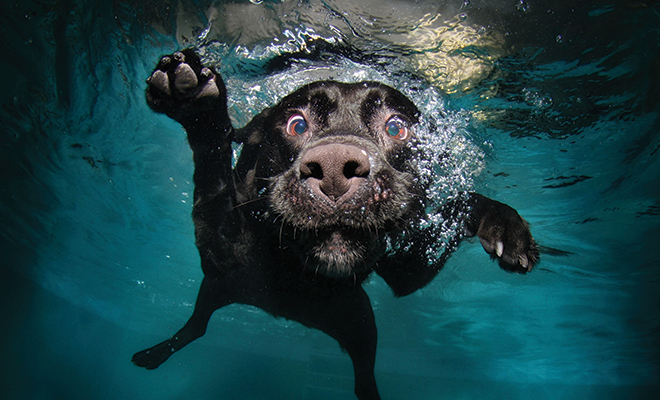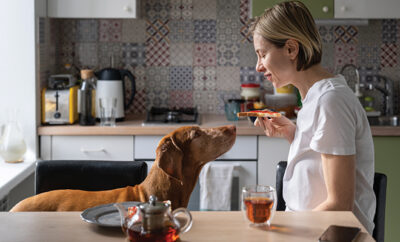
Heat Exhaustion: Keeping Your Pet Cool
As summer approaches, pets and their owners are outdoors more often. Many pets are unaccustomed to warm weather and as temperatures soar, so do the dangers to our pets. Heat stroke or heat exhaustion can be extremely dangerous if not caught quickly. Unattended, heat exhaustion can lead to heat stroke and cardiac arrest.
Both dogs and cats release the heat buildup in their bodies by panting and through their paws. Even so, when temperatures are elevated and the animal has been exposed to a prolonged period of heat, it is hard for them to efficiently reduce the heat in their bodies.
How do you know if your pet is suffering from overheating?
The signs are fairly easy to spot. They include restless behavior; excessive panting; difficulty breathing; glazed eyes; drooling; sweaty paws; rapid heartbeat; lack of coordination; vomiting; and diarrhea. If the condition persists it can lead to seizures and coma.
Prevention
Be especially observant of your pets during hot summer days or days with high humidity. Prevention is the best treatment, so be sure the animal has access to cool water and shade at all times. Indoor pets in homes with air conditioning should be fine; use caution if the air conditioning goes out. That might be a good time to board the pet in a kennel.
A common problem is the owner who leaves their pet in a car. Temperatures in the 70s can soar to over 120 degrees in a matter of minutes when the car is parked, even if it is in the shade with the windows lowered. Never leave an animal (or worse, your child!) in a car unattended.
Certain dogs and cats, often those with preexisting conditions such as obesity and heart disease, will be more likely to overheat. Flat-faced pets, such as pugs and bulldogs, or Persian cats, have a higher risk of developing breathing problems. Young pets or older pets and those with thick coats or long hair are also more prone to overheating.
Working dogs, such as Labrador retrievers and German shepherds, need frequent breaks during hot days. Hunting breeds or very active dogs need extra care and should not be pushed too hard during hot weather. Consider having them wear a cooling vest while working if the temperature soars, or wetting them down.
When the temperature climbs, allow your dogs to swim if they like to do so. It will help to keep them cool. A kiddie pool is a great addition to a fenced backyard for your dog. If you are traveling with your pet, keep her in her crate or carrier. Be sure she receives adequate ventilation.
Overheating
What should you do if the animal is overheated? The first step is to reduce the animal’s temperature. Place the animal indoors with air conditioning. If you have an outdoor animal, coax it to an area with shade and use a fan if possible.
Use a rectal thermometer to determine the animal’s temperature. Both cats and dogs have similar temperatures. If the animal’s temperature is over 103 degrees, check with your vet. If the temperature is over 105 degrees, this is a life-threatening emergency. Call the vet to let her know you are on your way.
Allow the animal to drink water if she wants to, but don’t try to force her. Use cool, fresh water and don’t add ice cubes. They could cause the temperature to drop too rapidly and lead to shock. Cool your pet down by placing her in the bathtub. Run a cool shower over the dog. You can use cool towels on her back and place cool towels on the ears and between her legs.
Medical care
Check the animal for signs of shock. Ask the vet to help you evaluate the animal and tell you what to do. It’s important to take your pet to the vet to prevent secondary damage that you may not be able to identify on your own. The gastrointestinal tract, kidneys, liver, heart, muscles, brain and bone marrow can all be affected if the animal’s temperature rises too high.
Veterinary care will probably replace lost fluids and minerals. The vet will continue to monitor your pet to prevent kidney failure, development of neurological conditions, abnormal blood clotting, changes in blood pressure and electrolyte abnormalities.
Back at Home
When your pet is released from the vet, she will still need cool, quiet atmosphere with a minimum of roughhousing. Plan on a few calm days before beginning your normal activities that involve the pet.
During the summer months, try to exercise during the early morning hours when the temperatures are cooler. In many areas of the country, the evening hours are still warm and humid, so don’t overdo. It will be safer for your pet—and for you. ■
Sources: petmd.com, hillspet.com, animalhosp.com.







